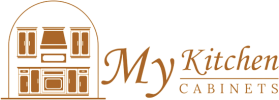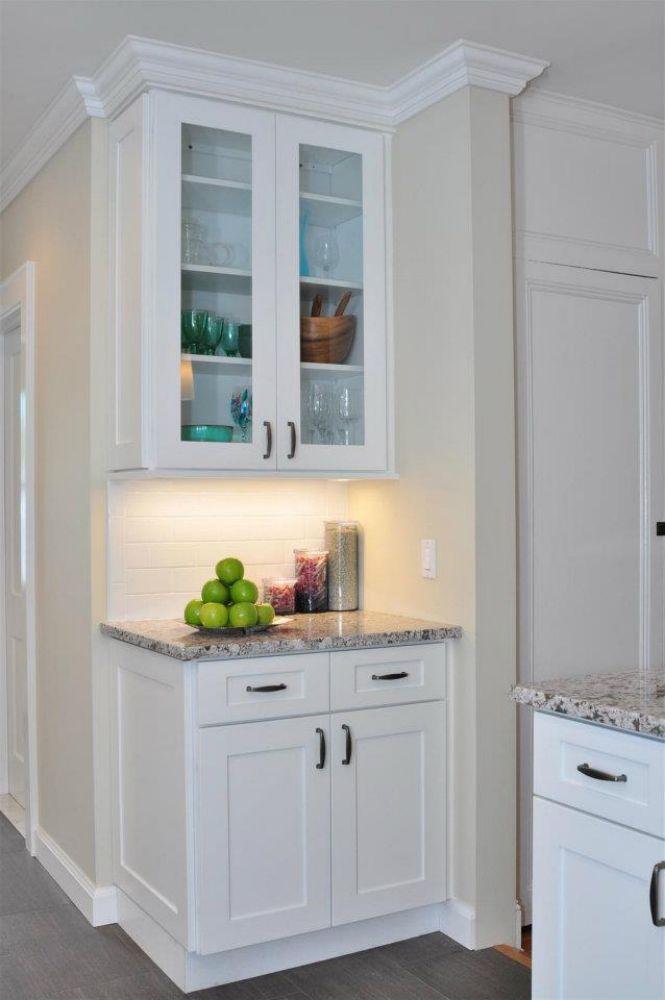The Importance of Evaluating Kitchen Cabinet Construction
When it comes to designing a new kitchen or remodeling an existing one, the quality of your kitchen cabinets can make or break the overall success of your project. Cabinets are one of the most significant investments in any kitchen—both visually and financially—so evaluating their construction quality before purchasing is essential.
At My Kitchen Cabinets, we believe that understanding what goes into the design, materials, and craftsmanship of your kitchen cabinets empowers homeowners to make informed choices that last for years. The market is full of options that look similar on the outside, but the true difference lies in what’s beneath the surface: the materials, joinery, hinges, and finishes.
This comprehensive guide will teach you how to evaluate cabinet quality before buying, covering everything from materials and finishes to drawer construction and assembly techniques—so you can confidently select cabinets that combine beauty, strength, and longevity.
Understanding the Basics of Kitchen Cabinet Construction
The Three Main Cabinet Types
Before diving into construction quality, it’s important to understand the types of cabinets available:
-
Stock Cabinets: Mass-produced, ready-made, and affordable. They come in standard sizes and limited styles.
-
Semi-Custom Cabinets: Offer flexibility in design and materials with more customization options than stock cabinets.
-
Custom Cabinets: Built to order, tailored to your exact dimensions, materials, and finishes—usually the most durable and premium option.
While stock cabinets are budget-friendly, custom and semi-custom cabinets often provide higher-quality construction and longer-lasting value.
Evaluating Cabinet Box Construction
Why the Cabinet Box Matters
The cabinet box is the structural foundation of your cabinetry. High-quality construction ensures that doors and drawers remain aligned, shelves don’t sag, and the entire system endures years of heavy use.
1. Material Choices
The material used for the cabinet box directly impacts durability and resistance to moisture or damage.
-
Plywood: Considered the gold standard. It’s strong, stable, and resistant to warping and moisture. Look for ½” to ¾” thick plywood for best results.
-
MDF (Medium Density Fiberboard): Smooth and consistent, ideal for painted finishes, but less resistant to water and heavy loads.
-
Particleboard: Common in budget cabinets. While affordable, it’s prone to sagging and water damage over time.
Pro Tip: Always ask what the cabinet box is made of. High-quality kitchen cabinets from My Kitchen Cabinets typically use furniture-grade plywood for superior durability and structural integrity.
2. Back Panels
Cabinet backs should be made from at least ½” thick material to prevent warping. Full-back panels are better than thin panels with mounting strips, as they provide greater strength for wall mounting.
3. Joinery and Reinforcements
The joints connecting cabinet parts determine long-term durability. Look for:
-
Dovetail joints: Found in high-quality drawers; interlocking design prevents separation.
-
Mortise-and-tenon joints: Excellent for cabinet frames and doors.
-
Pocket screws or dowels: Offer strong support in semi-custom and custom models.
Avoid cabinets held together with glue or staples—they won’t last under daily wear.
Assessing the Face Frame and Frameless Construction
Framed Cabinets
Framed cabinets have a solid wood frame attached to the front of the box. This traditional American style adds rigidity and makes door alignment easier.
Benefits:
-
More stability
-
Easier to install
-
Classic appearance
Frameless Cabinets (European Style)
Frameless cabinets eliminate the front frame, allowing for more interior storage and a modern look.
Benefits:
-
Full-access storage
-
Sleek, contemporary design
-
More efficient use of space
However, frameless cabinets require thicker box materials for structural stability—preferably ¾” plywood.
Tip: Whether you choose framed or frameless, inspect the craftsmanship. The alignment of corners, smoothness of edges, and sturdiness of assembly are key indicators of high quality.
Examining Doors and Drawer Fronts
1. Solid Wood vs. Veneer
Cabinet doors and drawer fronts are focal points in any kitchen, so their materials and construction are vital.
-
Solid Wood: Offers rich texture and durability. Can be refinished or repaired easily.
-
Wood Veneer: Thin slices of real wood applied over a stable substrate (like plywood or MDF). Provides an elegant look at a lower cost.
-
Thermofoil or Laminate: Durable and easy to clean but may peel under heat exposure.
For longevity, solid wood or high-quality veneer is ideal.
2. Construction Styles
-
Five-Piece Door (Frame and Panel): The most durable and elegant construction, ideal for traditional and transitional kitchens.
-
Slab Door: A single flat piece, commonly found in modern designs. It’s sleek and easy to clean.
3. Hinges and Door Alignment
Quality hinges make a huge difference in cabinet performance. Check for:
-
Soft-close hinges: Prevent slamming and reduce wear.
-
Concealed hinges: Enhance aesthetics and adjustability.
-
Heavy-duty metal components: Indicate long-lasting construction.
Open and close the doors several times—smooth movement and even spacing signal precision manufacturing.
Evaluating Drawer Construction
1. Drawer Box Material
Like cabinet boxes, drawer boxes should be made from high-quality plywood or solid wood. Avoid particleboard bottoms that may sag over time.
2. Joinery Techniques
-
Dovetail Joints: The hallmark of craftsmanship; provide superior strength and durability.
-
Rabbet or Stapled Joints: Common in cheaper cabinets but prone to loosening.
3. Drawer Slides
Check for:
-
Full-extension slides: Allow access to the entire drawer space.
-
Undermount glides: Hidden from view, smooth, and quiet.
-
Soft-close mechanisms: Prevent drawers from slamming shut.
When testing drawers, ensure they glide smoothly without sticking or wobbling.
Finishes and Coatings: A Critical Aspect of Durability
1. Types of Finishes
The finish protects your cabinets from moisture, stains, and UV damage. Common types include:
-
Paint: Smooth, customizable, ideal for solid-color finishes.
-
Stain: Highlights the wood grain and offers a natural look.
-
Lacquer: Provides a glossy, durable finish resistant to moisture.
-
Conversion Varnish: Offers industrial-level durability and resistance to chemicals.
2. Uniformity and Consistency
Examine the cabinet finish closely under natural light. Look for even color distribution, no blotches, bubbles, or visible seams. A quality finish should feel smooth to the touch.
3. UV and Moisture Resistance
Ask about the cabinet’s resistance to fading or humidity. Premium kitchen cabinets are treated with UV inhibitors and water-resistant coatings—crucial for long-term performance in humid environments.
Checking for Hardware Quality
1. Hinges
As mentioned earlier, heavy-duty concealed hinges (preferably soft-close) are signs of quality construction. Choose models with at least a 105° opening angle for ease of access.
2. Handles and Knobs
Solid metal hardware lasts longer and provides a premium feel compared to plastic alternatives.
3. Drawer Slides
Ball-bearing, full-extension, and undermount slides indicate durable construction and smooth performance over years of use.
Cabinet Assembly and Manufacturing Quality
1. Factory Assembly vs. RTA (Ready-to-Assemble)
-
Factory-Assembled Cabinets: Built and glued by professionals. More durable and precise.
-
RTA Cabinets: Convenient and affordable but rely on your assembly skills.
2. Fastening Techniques
Look for cabinets that use dowels, screws, and industrial adhesives—not just staples or nails. This ensures long-term strength and stability.
3. Reinforcements
High-quality cabinets often have corner blocks or I-beams that strengthen the structure and prevent twisting or sagging.
Testing the Cabinets Before Purchase
1. Physical Inspection
If possible, visit a showroom. Check how doors and drawers operate. Gently push, pull, and open components to test sturdiness.
2. Weight Test
Heavier cabinets generally indicate stronger materials and thicker plywood or hardwood.
3. Balance and Alignment
All cabinet doors should hang evenly without gaps or misalignment. Uneven doors may indicate poor construction.
4. Smell and Finish Quality
A chemical odor may signal low-quality adhesives or finishes. Quality products, like those from My Kitchen Cabinets, use eco-friendly, low-VOC finishes that are safe and long-lasting.
Comparing Cabinet Brands and Certifications
1. KCMA Certification (Kitchen Cabinet Manufacturers Association)
This certification ensures the cabinets have passed tests for durability, moisture resistance, and structural integrity.
2. CARB2 Compliance
Verifies that the materials meet low formaldehyde emission standards, contributing to a healthier home environment.
3. Warranty Coverage
A strong warranty reflects the manufacturer’s confidence in their product. Look for at least a 5- to 10-year warranty on structural and finish components.
4. Brand Reputation
Research customer reviews and testimonials. Reputable manufacturers like My Kitchen Cabinets prioritize craftsmanship, sustainability, and customer satisfaction.
Comparing Price vs. Quality
While price is often an indicator of quality, it’s not the only factor. Evaluate where your budget meets performance. Spending a little more on high-quality cabinets saves money in the long run by reducing repairs and replacements.
-
Entry-Level ($): Particleboard, basic hardware, limited customization.
-
Mid-Range ($$): Plywood construction, soft-close drawers, premium finishes.
-
High-End ($$$): Custom-built, solid wood, dovetail joints, and luxury finishes.
Always balance your investment between functionality, longevity, and aesthetic appeal.
Common Red Flags to Watch Out For
-
Stapled or Glued Joints Only – Poor long-term durability.
-
Thin or Flimsy Back Panels – Weak structural support.
-
Plastic Hinges or Drawer Slides – Cheap hardware that breaks easily.
-
Uneven Paint or Finish – Indicates poor surface preparation.
-
No Warranty or Certification – A lack of quality assurance.
Conclusion
Evaluating the construction quality of kitchen cabinets before buying isn’t just about aesthetics—it’s about ensuring your investment lasts for decades. The best cabinets combine durable materials, expert craftsmanship, precise joinery, and superior finishes.
At My Kitchen Cabinets, every product is built with a commitment to long-lasting quality, functionality, and design excellence. Whether you’re remodeling your kitchen or building a new one, our cabinets are engineered to provide both beauty and strength—meeting the high demands of modern living while enhancing your home’s value.
When you know what to look for—strong box construction, solid joinery, durable finishes, and reliable hardware—you can confidently choose cabinets that stand the test of time.
FAQs
1. How can I tell if a cabinet is made from high-quality materials?
Check the cabinet box and drawer construction. Plywood or solid wood materials are stronger and more moisture-resistant than particleboard or MDF. High-quality finishes and sturdy hardware are also good indicators.
2. What is the best type of joint for cabinet drawers?
Dovetail joints are the most durable and precise option. They lock the sides of the drawer together mechanically, ensuring superior strength and longevity compared to stapled or glued joints.
3. Should I choose framed or frameless cabinets?
It depends on your preference. Framed cabinets offer traditional strength and style, while frameless cabinets provide modern looks and easier access. Both are durable if constructed with quality materials.
4. How long should good kitchen cabinets last?
Well-built cabinets can last 20–30 years with proper care. High-quality plywood boxes, durable finishes, and solid hardware significantly extend lifespan.
5. Are custom cabinets worth the investment?
Yes—if you’re seeking superior quality and exact specifications. Custom cabinets offer better craftsmanship, more design options, and materials tailored to your lifestyle, making them a long-term investment in your home.
Read: What kitchen cabinets are best suited for coastal or beach-style homes?
Read: Are kitchen cabinets with dovetail drawers more durable?

